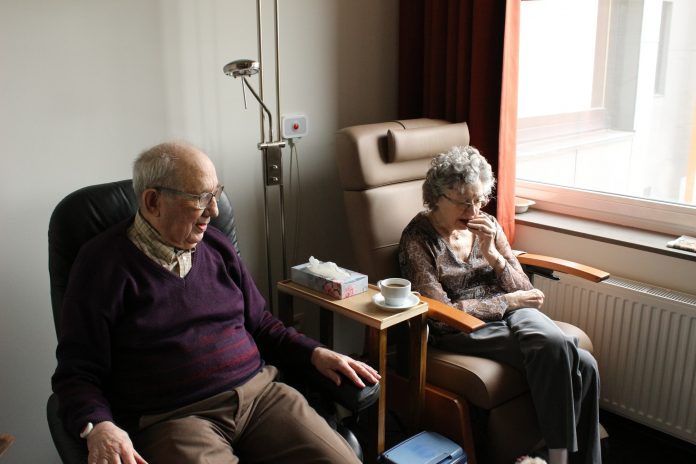The United States has only 2.8 hospital beds per 1,000 people. It is four times less than South Korea or Japan, and more than twice less than in France.
American Healthcare
Washington – The American healthcare system is not designed to treat millions of people who are victims of an epidemic. The ban on entry into the United States for continental Europeans, announced Wednesday evening, will not change this structural situation, well before the arrival of Donald Trump in the White House. The president’s soothing words about the coronavirus for weeks reflect the hope, even the calculation, that the Covid-19 will only be really dangerous for a tiny minority of Americans and that it will pass out with the arrival spring temperatures.

Some figures summarize the magnitude of the challenge facing American medicine, which is mostly private, independent of the federal state, states, and local communities: the United States thus has only 2.8 hospital beds per 1000 inhabitants. It is four times less than South Korea or Japan, and more than twice less than in France.
Extremely ill
Only those who are extremely ill and cannot be followed up properly in another enclosure stay there. For cost reasons, patients are very quickly sent home, before their complete recovery. On average, in regular times, 68% of these hospital beds are occupied. This, therefore, leaves only some 300,000 beds available for those, more and more numerous, whose breathing is threatened by the coronavirus. The country has 328 million inhabitants.
45,000 beds
Worse still, there are only 45,000 beds in intensive care units. Even taking into account the fact that the average American smokes less than the Chinese even the average Italian, and by integrating the average age which is lower in the United States, it is possible that at the current rate of progression of the disease, the American intensive care services will be saturated in May.
Substantial risk of contagion
This date may approach if it turns out, as it is feared, that the high proportion of Americans suffering from high blood pressure, diabetes, and other chronic diseases, contributes to the increase in severe cases of contamination. These patients will have to be treated for weeks in intensive care. It is estimated that only 16,000 respirators are installed in American hospitals.

In addition to these disturbing considerations, there are unfavorable economic factors: the most obvious is the reluctance of Americans to get sick, for fear of losing their Paycheck. In the absence of federal law on paid medical leave, a quarter of Americans work for companies that do not provide for these circumstances.
Paid sick leave
For employees at the bottom of the scale, the proportion of employees entitled to paid sick leave is only 50%. And often, they are elevated risk people, working in restaurants and hotels. Hence the discussions right now in Washington to compensate Americans paid by the hour, forced into quarantine.
28 million Americans
To make matters worse, 28 million Americans are still without health insurance. Those who are covered, in part thanks to their employer, must pay out of their pocket a deductible of several thousand dollars before being fully covered. This results in a higher risk than in Europe of contagion at the workplace. Finally, the promise made to Donald Trump by private health insurance companies not to charge for the coronavirus test is hardly significant since these insurers also plan to charge the costs of treating the illness regularly.
Read Also: The Facts on the Coronavirus




